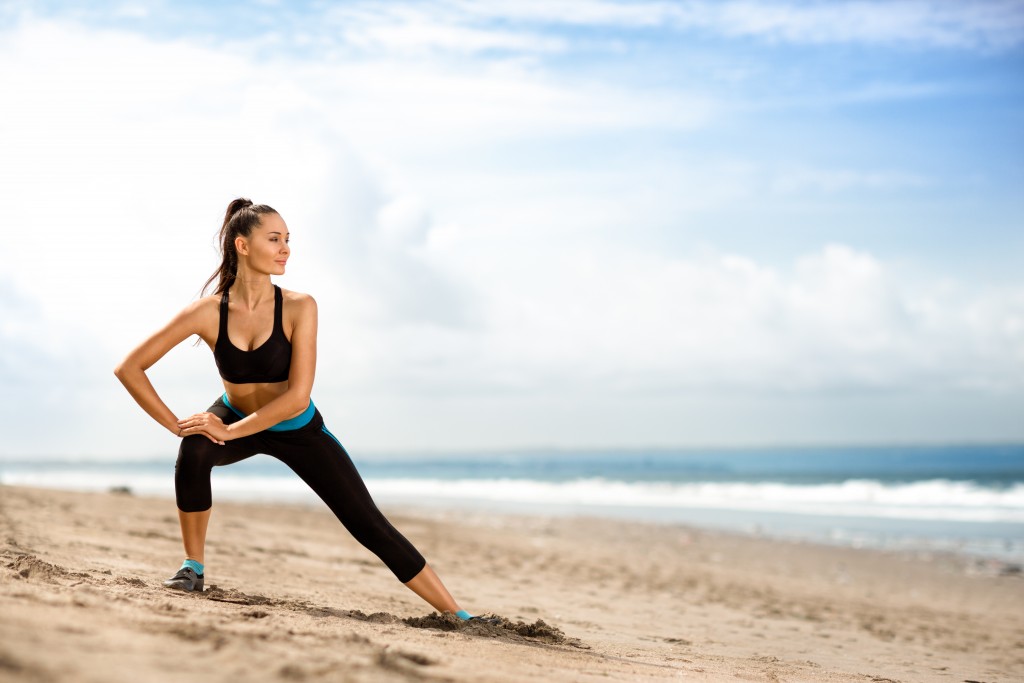
By Certified Group Fitness Instructor, Personal Trainer and Sports Nutritionist Angie Janes, M.Ed., M.A.
The National Physical Activity Guidelines for adults state that Australian adults should do at least 30 minutes of moderate intensity, physical activity on most days. However, according to the Australian Institute of Health and Welfare only 43% of Australian adults actually met the “sufficiently active” threshold. How did we become so sedentary?
From a technological perspective, we have re-engineered our home, school, work and social environments to minimize movement and consequently encourage inactivity. Slowly, but surely, we have arrived at a daily routine that involves hardly ANY physical activity — intentional or non-intentional. The World Health Organization (WHO) asserts that physical inactivity constitutes the fourth leading cause of death globally. We are now reaping the consequences of not moving our bodies.
We are not plants! The human body NEEDS to move!
Activity is an essential part of ANY healthy lifestyle and weight management plan, but for more reasons than just burning extra calories. Improved mood, better sleep and disease prevention are all advantages of moving more. There are also additional hidden benefits of physical activity that occur at the cellular level such as improved hormone regulation, metabolic efficiency, epigenetic regulation and anti-oxidant response.
Just like diet, there is no specific exercise plan that works for everybody. We all need to incorporate more activity into our “daily” routines (e.g. take the stairs vs. the elevator or park farther away), as well as regularly participate in structured activities that include cardiovascular, strength and flexibility training to promote functional fitness.
The purpose of functional fitness is to build a body capable of doing real-life activities in real life positions and consequently promote successful aging. Exercise should be moderately challenging, but also needs to be enjoyable for YOU! Take a Zumba dance class, go hiking, skipping or bounce on a trampoline. Try kayaking, Pilates or swimming. If you don’t enjoy it, you won’t stick with it, but be sure to give yourself time to adjust to new workouts. You may not enjoy yoga the first time, but after a few sessions, you might change your mind. Consistency and variety are essential. Change up the intensity, frequency and duration of workouts to prevent boredom and training adaptations that limit results.
Intentional exercise programs that focus on functional fitness should incorporate strength, cardiovascular training and flexibility. Some workouts, like circuit training, may combine the elements (strength and cardio) while other exercises may be more specific (running is generally cardio). Pilates is an example of a workout that combines strength and flexibility.
Strength training (2-3 times per week)
As we age we tend to lose lean muscle mass, which is a condition known as sarcopenia. Resistance training helps maintain and combat the loss of muscle mass by increasing muscular fitness. As strength training builds lean muscle mass, resting metabolic rate also increases, which allows you to burn more calories without even trying. This form of training can prevent osteoporosis by promoting bone density. Regular resistance training can also decrease the risk of heart disease by lowering body fat, decreasing blood pressure and improving cholesterol levels.
Resistance training can be accomplished with traditional free weights and dumbbells, weight machines, elastic tubing, medicine balls or even common household products like milk jugs filled with sand or soup cans.
Cardiovascular training (3-4 times per week)
Cardiovascular activity is any kind of activity that increases the work of the heart and lungs. Running, walking, dancing, swimming, elliptical, cross-training, biking, Stairmaster, and rowing are aerobic activities that burn calories, as well as promote health with the following benefits:
- Lowers blood pressure
- Enhances immunity
- Improves cholesterol levels
- Boosts mood
- Strengthens heart
- Reduces risk of chronic disease
Flexibility (1-2 times per week)
Stretching can help improve flexibility, and consequently, the range of motion in your joints. Better flexibility may improve your performance in physical activities and decrease your risk of injuries by helping your joints move through their full range of motion. Stretching also increases blood flow to the muscles and improves balance. Yoga and Pilates are two forms of flexibility training that also build muscular strength.
Starting a fitness program may be one of the best things you can do for your health. Don’t be afraid to ask for help when getting started. Many resources are available in your community, including gyms, boot camps and yoga/pilates studios. These facilities have beginner programs, as well as personal trainers who can help you set goals and design a safe and realistic workout program specifically for you. Individual workouts and home workouts are time-saving alternatives, but you will need to educate yourself on how to get started. There are hundreds of online resources, fitness forums, videos and blogs, so heed advice cautiously.
Physical activity is an important step towards achieving optimal health, but nutrition is also a critical part of the equation. Your body needs quality fuel to support your energy demands, lean muscle development and recovery. Reliv’s LunaRich X contains lunasin, which is a natural anti-inflammatory and anti-oxidant that can promote a quicker recovery after tough workouts.